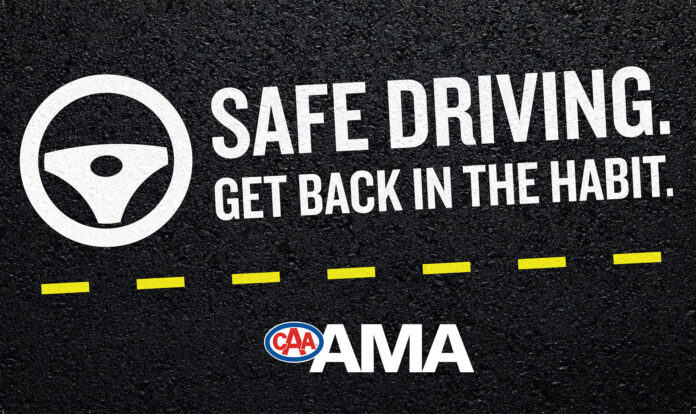The Alberta Motor Association (AMA) has started a new campaign promoting safe driving habits.
The provincewide ‘Get Back in the Habit’ initiative uses how-to videos and resources that address the leading causes of casualty collisions in Alberta. The AMA says every year in the province, there are over 100,000 collisions, with most of those being preventable. Officials say many of these collisions are the result of poor driving habits developed over time.
The campaign launch comes on the heels of an AMA survey, which the association says shows “significant disparity” between the risky behaviours that motorists witness on the roads and what they will admit to doing themselves.
Nearly two-thirds of Albertans (63 per cent) say the roads in the province have become more dangerous in the last two years. With that, the AMA says its ‘Get Back in the Habit’ campaign will focus on the following habits that can cause collisions: rolling stops, speeding, improper left turns, and tailgating.
The survey of 1,882 people in Alberta found:
- Just seven per cent of Albertans admit they roll through stop signs, but 48 per cent say they frequently witness this behaviour.
- Only 12 per cent of respondents say they speed, while 79 per cent say they frequently witness speeding on roads in Alberta.
- One per cent of those surveyed admit they make improper turns, but 29 per cent frequently witness others doing so.
- One per cent of respondents say they follow other drivers too closely, but 58 per cent say they frequently see this happen.
The AMA says one per cent of motorists surveyed will openly admit that other drivers are better than them.
About 68 per cent say other drivers are worse than they are, while 19 per cent believe their habits are about the same.
The remaining 12 per cent say they are uncertain about how they compare.
“We can sometimes be quick to judge other drivers’ actions but slow to examine our own,” says AMA’s vice-president of advocacy and operations Jeff Kasbrick.
“We’re all part of a shared driving community. By getting back in the habit of safe driving, we can each make a big difference to safety on our roads.”
Kasbrick adds driving can be one of the most dangerous activities people do in a day.
“Sometimes, it’s our small, everyday habits – developed over time – that can be the biggest contributors to collisions,” he says.
“Bu we aren’t powerless. Nearly every collision is preventable if we simply commit to better behaviour behind the wheel.”







